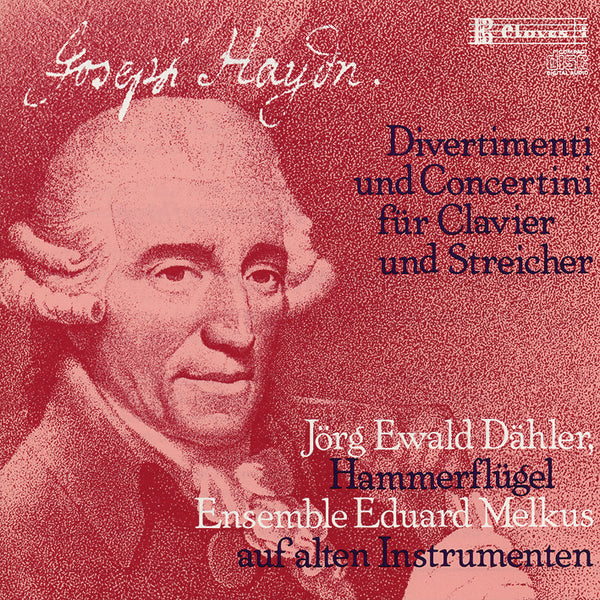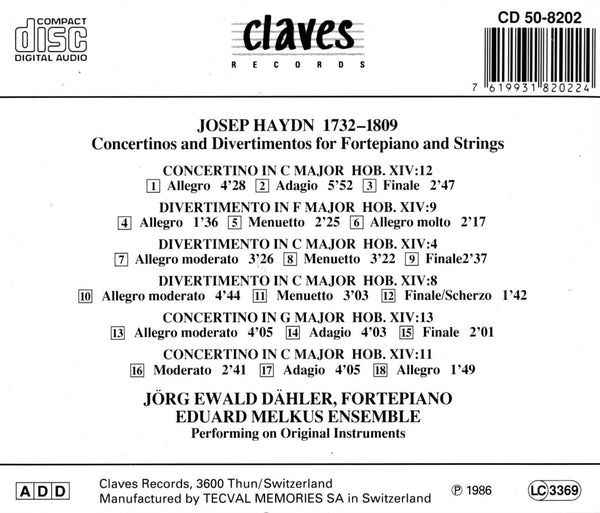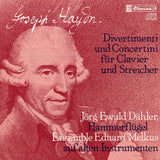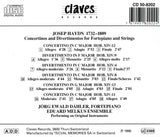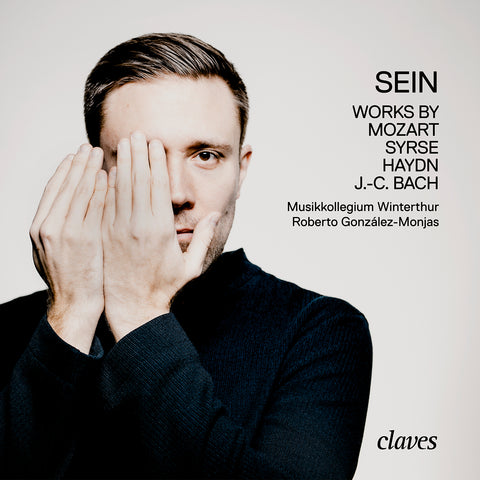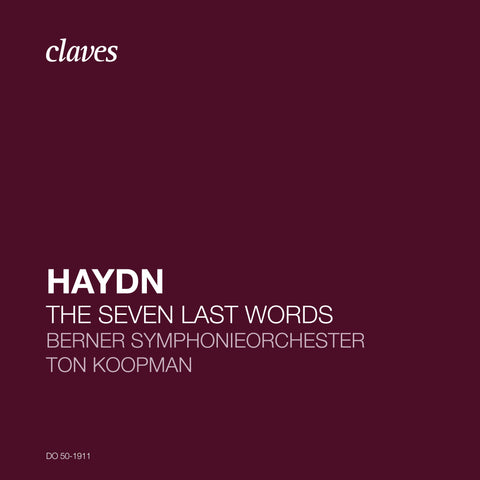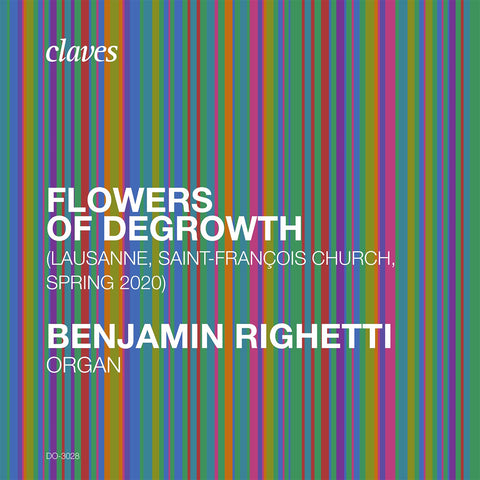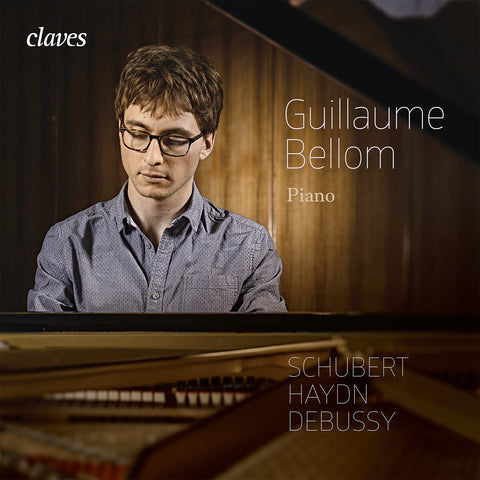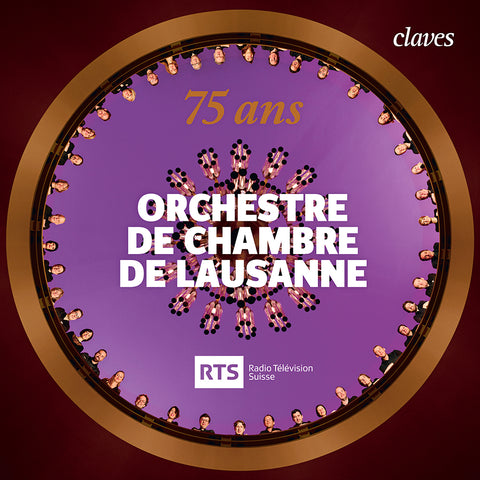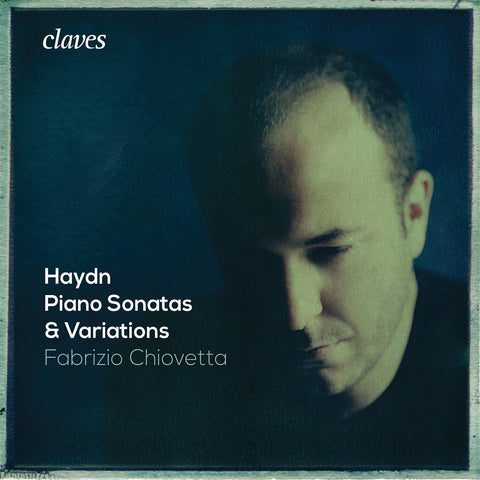(1982) J. Haydn: Divertimenti & Concertini for Pianoforte and Strings
Category(ies): Concerto Piano
Instrument(s): Piano
Main Composer: Joseph Haydn
CD set: 1
Catalog N°:
CD 8202
Release: 1987
EAN/UPC: 7619931820224
- UPC: 886788536418
This album is now on repressing. Pre-order it at a special price now.
CHF 18.50
This album is no longer available on CD.
This album has not been released yet. Pre-order it from now.
CHF 18.50
This album is no longer available on CD.
CHF 18.50
VAT included for Switzerland & UE
Free shipping
This album is no longer available on CD.
VAT included for Switzerland & UE
Free shipping
This album is now on repressing. Pre-order it at a special price now.
CHF 18.50
This album is no longer available on CD.
This album has not been released yet.
Pre-order it at a special price now.
CHF 18.50
This album is no longer available on CD.
CHF 18.50
This album is no longer available on CD.
J. HAYDN: DIVERTIMENTI & CONCERTINI FOR PIANOFORTE AND STRINGS
Haydn's name became well known in the 1750's and 1760's. His works were successful everywhere, and his early string quartets were particularly popular. His financial situation also improved. He enters the service of Count Morzin in 1759 and finally enjoys a fixed income. Haydn was appointed vice Kapellmeister to Prince Paul Anton Esterházy.
Although the works of this period are well balanced and dominated by beautiful melodies, they reflect little of the composer's personality and show a kind of reserve. This is probably due to the fact that Haydn adapted to the light style of his time and took on some of the courtly twists. Haydn's style changed dramatically when Prince Nicholas Esterházy hired him as "Kapellmeister" in 1766. The trios for baritone, viola and cello are a good example of the change in character of the composer's works.
Haydn offers a mirror to Prince Esterházy (the dedicatee of his works); he is amused by the refined and perfumed materials of the court. The Divertimenti for fortepiano, 2 violins and bass are far from reflecting such humor. The three Divertimenti (entitled Esterházy Divertimenti) Hob. XIV 4, 8 and 9 recorded on this disc were composed during the first five years of court service, Hob. XIV 4 dates from 1764. These works were probably conceived as table music.
The numbering in the Hoboken index misleads the uninformed, for the Divertimenti Hob. XIV 11, 12 and 13 were composed earlier than Hob. XIV 4, 8 and 9. The Divertimento Hob. XIV 11 was written in 1760 for a pupil of Haydn's, the beautiful Countess Morzin. Hob. 12 and 13 probably date from the same year.
The Morzin Divertimenti (written earlier) differ from the Estherházy Divertimenti only in the character of the central movement. In the former Haydn writes dreamy adagios, and in the latter court minuets containing a trio. The name Concertini sometimes given to the Divertimenti may be due to the very virtuosic treatment of the fortepiano part (small cadenzas abound). But the strings do not have tutti blocks.
The six works are composed in C, G or F major. Never in the entire history of music has there been such a large number of works composed in C major (and its satellite keys) as in the pre-classical period. It may be that this "simplicity" is due in part to the fact that music should sound uncomplicated, and beautiful melodies should charm the listener's soul.
Haydn's works from the years before 1766 resemble those of his contemporaries, but they reveal the art of this great master. The Divertimenti and Concertini undoubtedly bear the stamp of one of the greatest in the history of music.
Translated from French by www.DeepL.com/Translator (free version)
(1982) J. Haydn: Divertimenti & Concertini for Pianoforte and Strings - CD 8202
Haydn's name became well known in the 1750's and 1760's. His works were successful everywhere, and his early string quartets were particularly popular. His financial situation also improved. He enters the service of Count Morzin in 1759 and finally enjoys a fixed income. Haydn was appointed vice Kapellmeister to Prince Paul Anton Esterházy.
Although the works of this period are well balanced and dominated by beautiful melodies, they reflect little of the composer's personality and show a kind of reserve. This is probably due to the fact that Haydn adapted to the light style of his time and took on some of the courtly twists. Haydn's style changed dramatically when Prince Nicholas Esterházy hired him as "Kapellmeister" in 1766. The trios for baritone, viola and cello are a good example of the change in character of the composer's works.
Haydn offers a mirror to Prince Esterházy (the dedicatee of his works); he is amused by the refined and perfumed materials of the court. The Divertimenti for fortepiano, 2 violins and bass are far from reflecting such humor. The three Divertimenti (entitled Esterházy Divertimenti) Hob. XIV 4, 8 and 9 recorded on this disc were composed during the first five years of court service, Hob. XIV 4 dates from 1764. These works were probably conceived as table music.
The numbering in the Hoboken index misleads the uninformed, for the Divertimenti Hob. XIV 11, 12 and 13 were composed earlier than Hob. XIV 4, 8 and 9. The Divertimento Hob. XIV 11 was written in 1760 for a pupil of Haydn's, the beautiful Countess Morzin. Hob. 12 and 13 probably date from the same year.
The Morzin Divertimenti (written earlier) differ from the Estherházy Divertimenti only in the character of the central movement. In the former Haydn writes dreamy adagios, and in the latter court minuets containing a trio. The name Concertini sometimes given to the Divertimenti may be due to the very virtuosic treatment of the fortepiano part (small cadenzas abound). But the strings do not have tutti blocks.
The six works are composed in C, G or F major. Never in the entire history of music has there been such a large number of works composed in C major (and its satellite keys) as in the pre-classical period. It may be that this "simplicity" is due in part to the fact that music should sound uncomplicated, and beautiful melodies should charm the listener's soul.
Haydn's works from the years before 1766 resemble those of his contemporaries, but they reveal the art of this great master. The Divertimenti and Concertini undoubtedly bear the stamp of one of the greatest in the history of music.
Translated from French by www.DeepL.com/Translator (free version)
Return to the album | Composer(s): Joseph Haydn | Main Artist: Jörg Ewald Dähler







